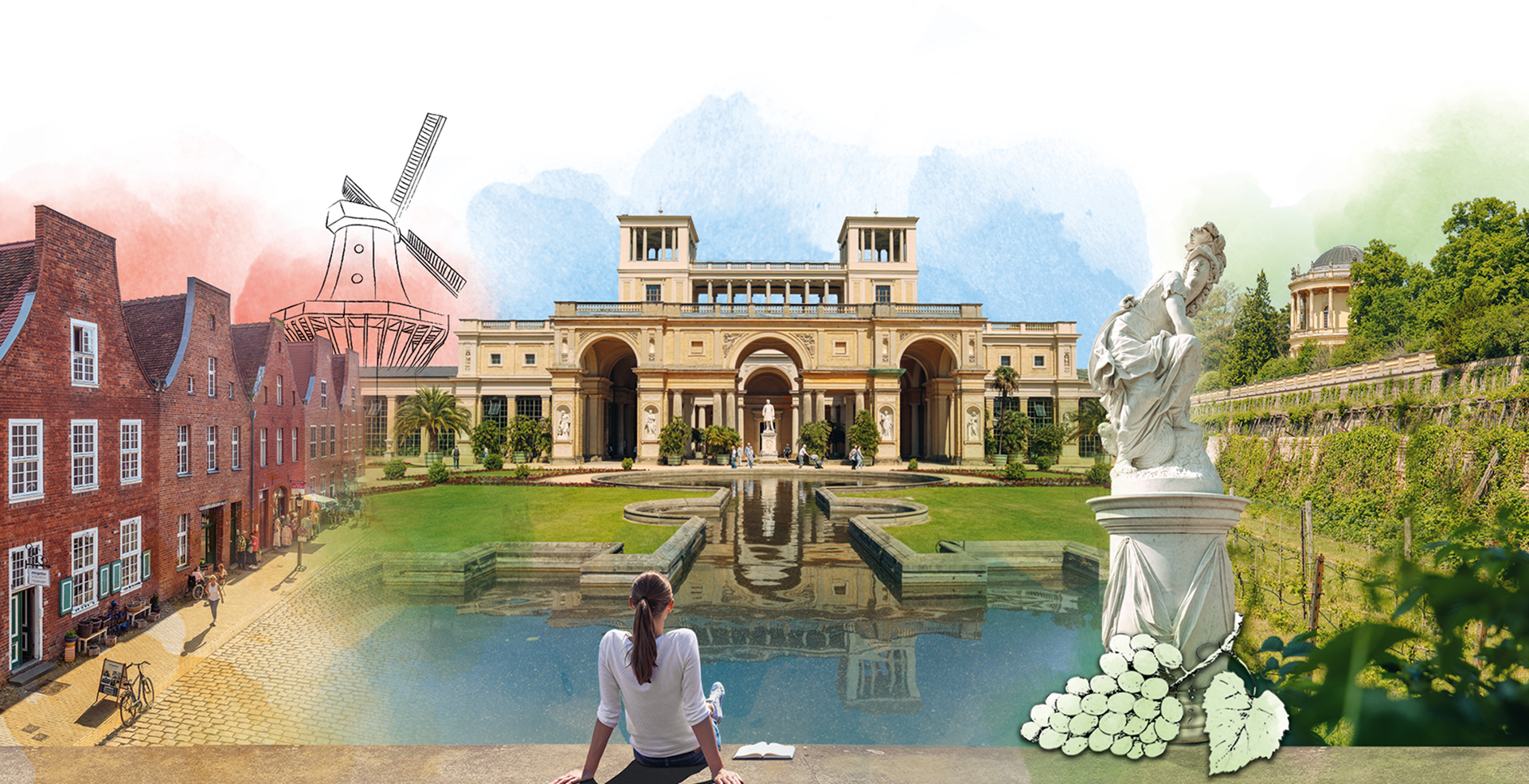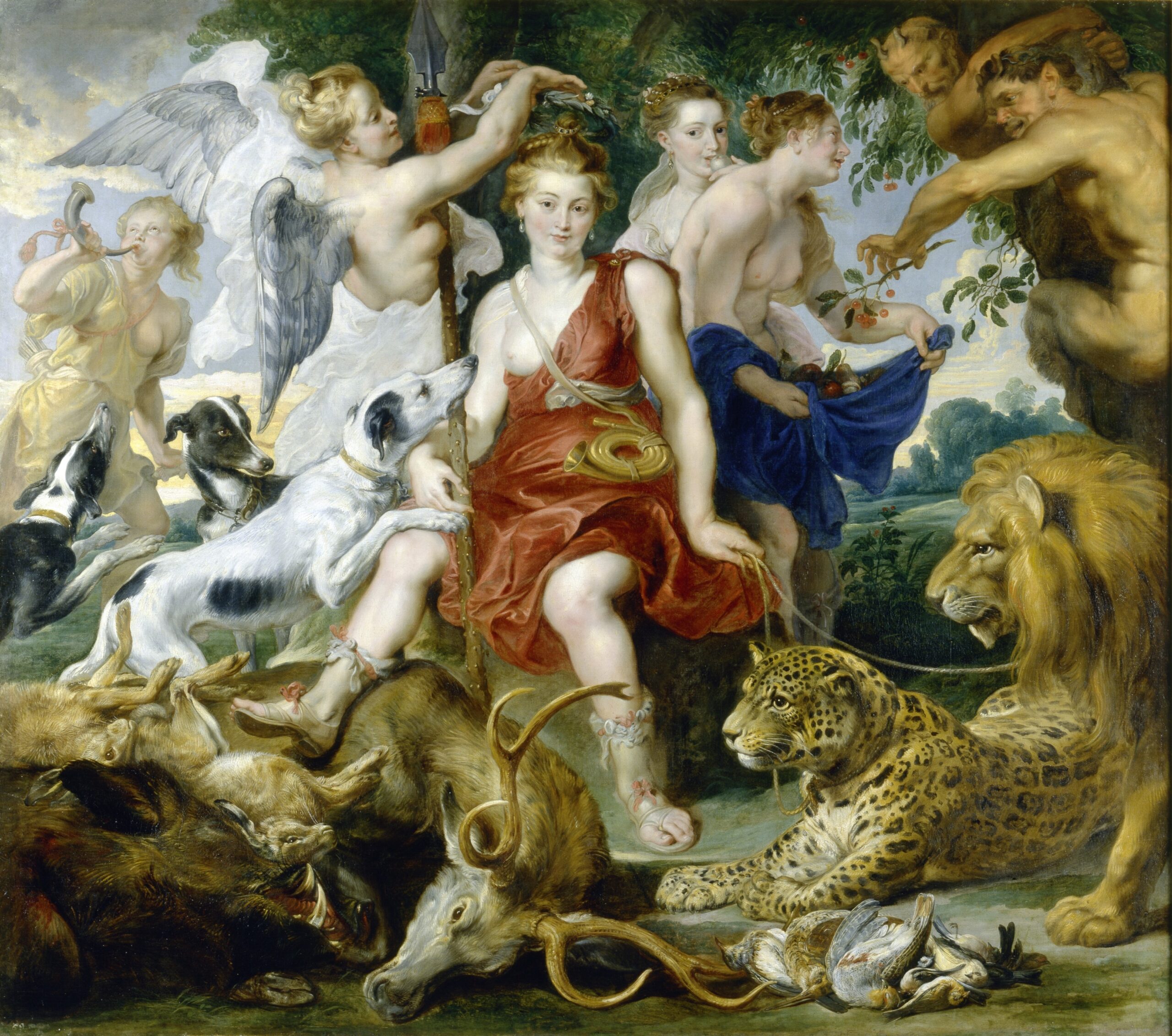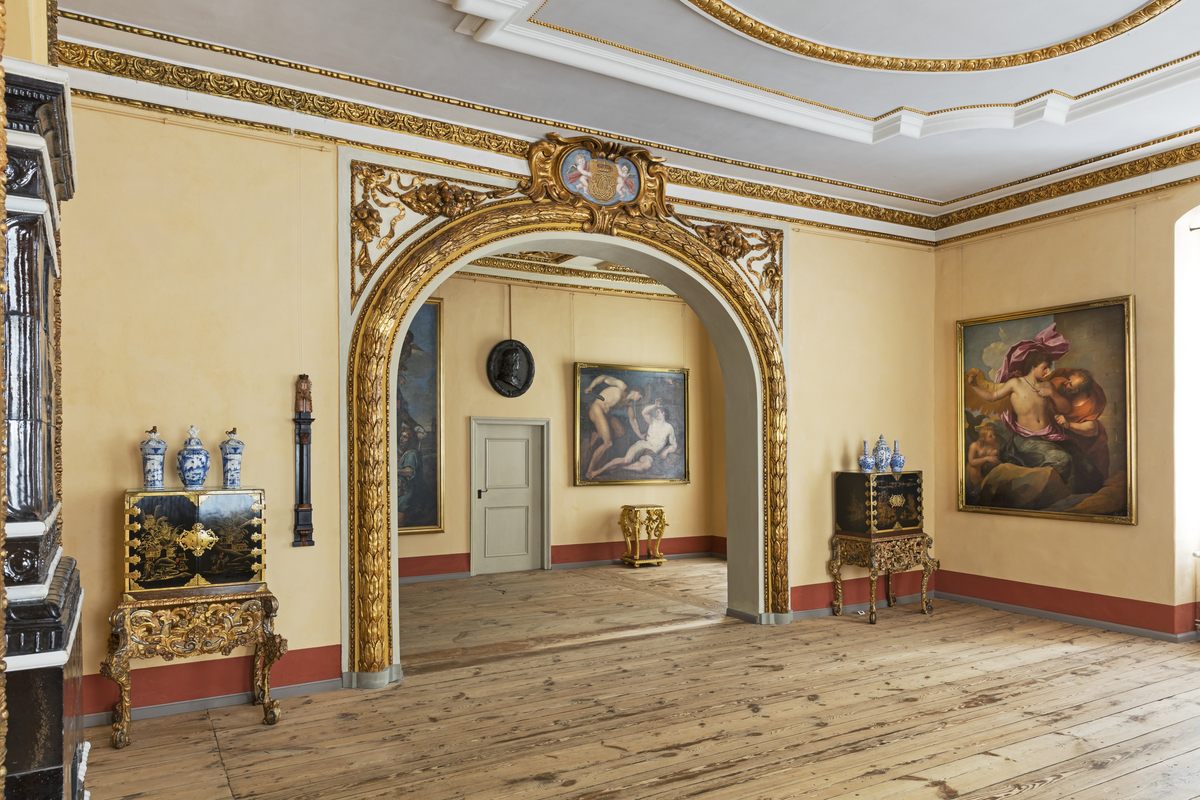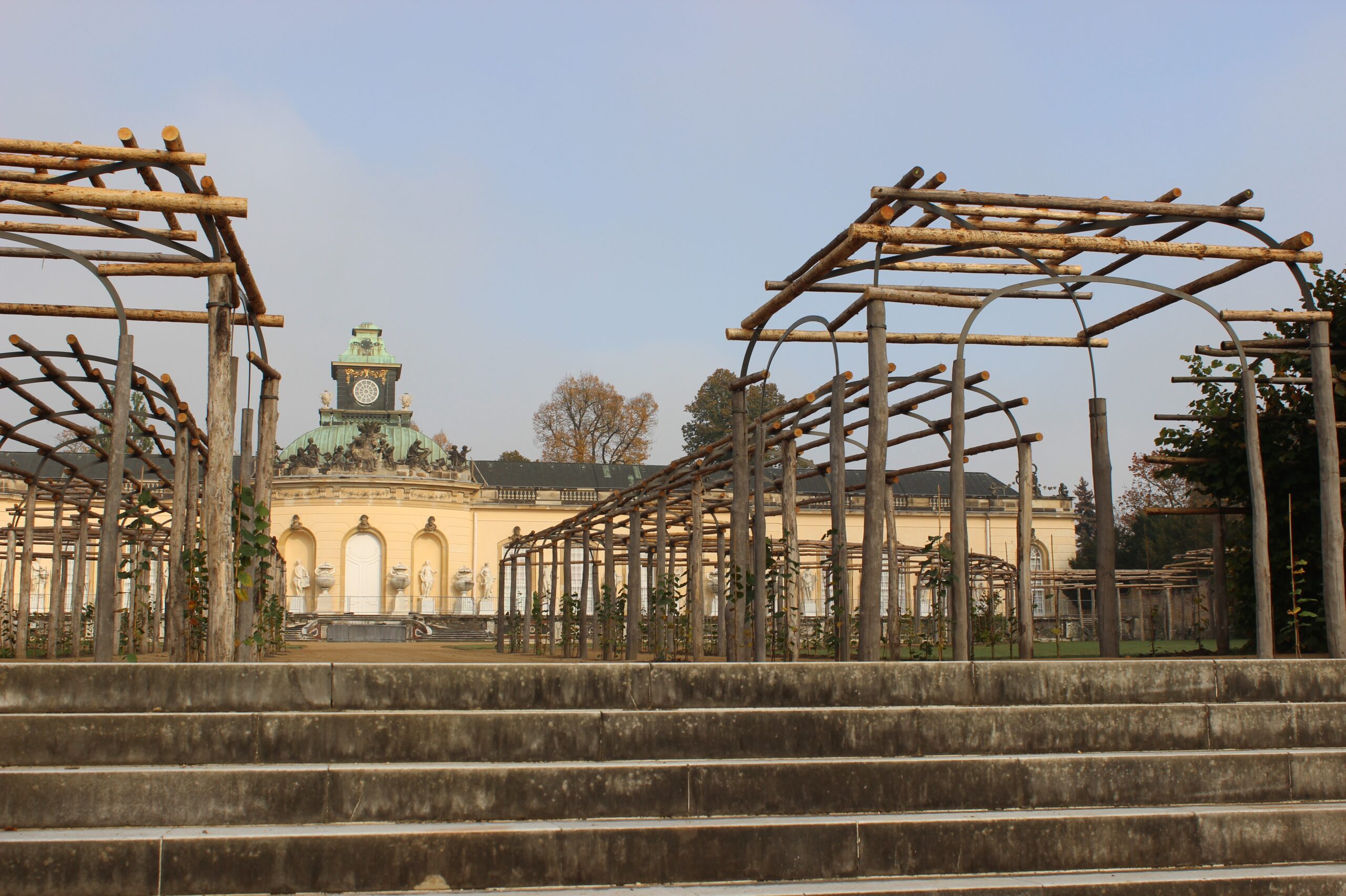
The Heydert Tomb
Among the funerary monuments in Potsdam and the surrounding area, there is an epitaph in Stolpe (now part of Berlin-Wannsee), erected in 1778‒79 on the oldest and most stately grave monument for two of Prussia’s court gardeners recruited in Holland. The tomb’s three central text panels provide information on the lives of Martin Heydert, Joachim Ludwig Heydert and his first wife, Maria Magdalena Heydert.
Alongside the texts is a strikingly expressive figure with a scythe, representing the god Chronos (aka Saturn). The god of antiquity was regarded as a teacher of agriculture. Depicted as an old man with wings, he embodied time’s brief and transitory nature. In Stolpe, this figure also appears as the personification of death, accompanying the text panels with the vital data of the deceased. The high-quality figure may be a work by Christian Wilhelm Meyer in Berlin or a sculptor working in Potsdam at that time. How did this exceptional monument come into the little village church on the Glienicker Werder (Wannsee Island)?
The tomb was erected in 1777 to commemorate the death of Maria Magdalena Heydert, née Krooken (Krokin), who came from the Danish Jütland. She was orphaned at 14 and went to live with an aunt in Holland, where she later met Joachim Ludwig. Their civil ceremony in 1752 took place at the Amsterdam City Hall, and they celebrated their wedding at the Tulpenburg manor in North Holland. After working in Isaak de Pinto’s gardens for 17 years, where his half-brother also found a position, Joachim Ludwig Heydert was promoted to head assistant in Tulpenburg. The master and mistress of the Tulpenburg estate hosted his wedding.
Pinto’s gardens were well-known at the time for their grottos. Three years after Heydert’s wedding, Prussia’s King Frederick II travelled there to see them for himself. The king was impressed and decided to lay out a similar garden in Potsdam. When Frederick learned that the Dutch gardener in Tulpenburg did not actually come from Holland but was instead born in Klein-Glienicke in Potsdam, he was determined to woo Heydert away. His first attempt was unsuccessful because Frederick had come to Holland incognito, dressed as a Polish kapellmeister (court conductor). Heydert only agreed after the king disclosed his true identity and assured Heydert the retirement pension he insisted on for his wife would be provided.
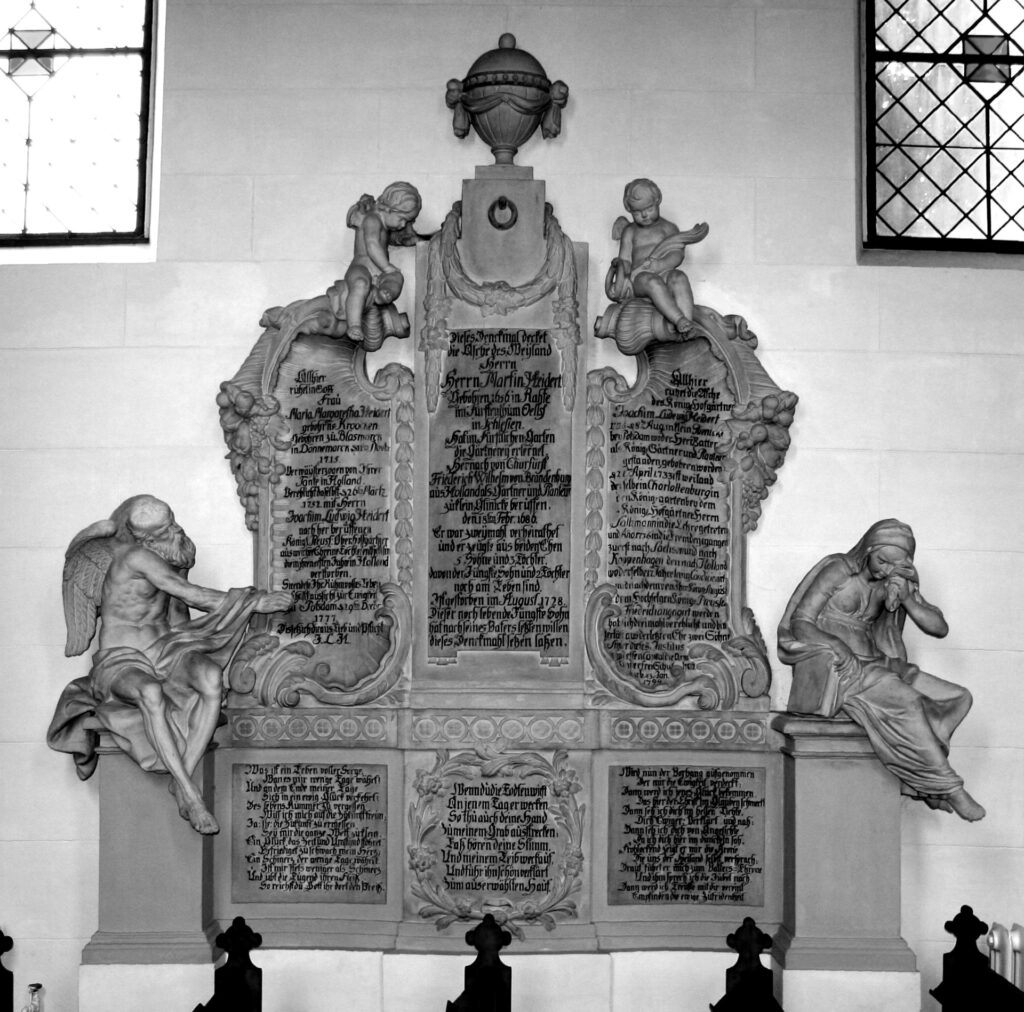
Many decades before, Joachim Ludwig’s father, Martin Heydert, had also been recruited from Holland as a court gardener in Potsdam. The text panel at the centre of the epitaph records the most important stages of his life. Silesian by birth, after an apprenticeship in the Oels’ ducal gardens and his journeyman’s years spent in Saxony, Hesse and France, the elder Heydert settled in Holland. On 18 February 1686 – the epitaph proudly emphasizes the date – the Great Elector called him to come to Klein-Glienicke, appointing him as planter and gardener. At that time, gardeners from Holland, a field mainly dominated by orangery and fruit gardeners, were meant to compensate for the lack of qualified employees in Brandenburg horticulture. In Glienicke, Martin Heydert was in charge of the planting and maintenance of the orchards near the palace, the cultivation of citrus fruit and figs in the Orangery, and he was probably also responsible for a large grove comprising 5000 trees. To a certain extent, the sculptural ornamentation on the epitaph ‒ with apples, pears, plums (also oranges and figs?), melons and grapes ‒ represents the bountiful yield from Glienicke’s gardens, intended for the elector’s court kitchen and wine cellar. In Glienicke, Cornelius Ruyggens, from Breda, also brewed Dutch beer for the elector’s court.
Martin Heydert moved into service accommodations at Jagdschloss Glienicke, the elector’s hunting lodge. The hunting lodge is said to have experienced its heyday under Frederick III/I after the death of the Great Elector in 1688. However, in 1713, his heir Frederick William I dispensed with the royal gardens, and Heydert was let go as court gardener. Nevertheless, he could take over the lease of the Glienicke Gardens and keep his existing accommodation. When a hospital moved into the palace’s side wings in 1715, Heydert employed convalescing guard soldiers in his garden.
Martin Heydert was married twice. According to the epitaph’s inscription, his marriages produced “five sons and three daughters”. Joachim Ludwig was a son from the second marriage to Maria Magdalena Hasse, a daughter of one of the elector’s personal coachmen. The children grew up in Glienicke. Following the death of his oldest son in 1727, Martin Heydert died in August of the following year at age 73. Since Glienicke did not have its own church at the time, the funerals of Joachim Ludwig’s half-brother and his father took place in nearby Stolpe, where they were buried. Later, after Joachim Ludwig had amassed considerable wealth through his flourishing commercial nursery trade in Potsdam, he installed the epitaph on his father’s grave, which he had redesigned into a family crypt. Joachim Ludwig’s second wife (his niece Katharina Pleymert, who previously lived in Amsterdam) and he were also buried there in 1786 and 1794, respectively.
– Stefan Gehlen, Stiftung Preußische Schlösser und Gärten Berlin-Brandenburg
Header Image: Pergolas in the Dutch Garden in front of the Picture Gallery │ Photo: SPSG, Carl Hohhrath

